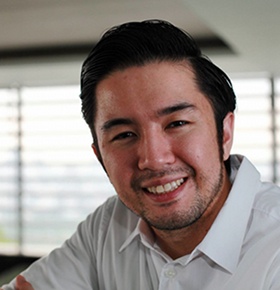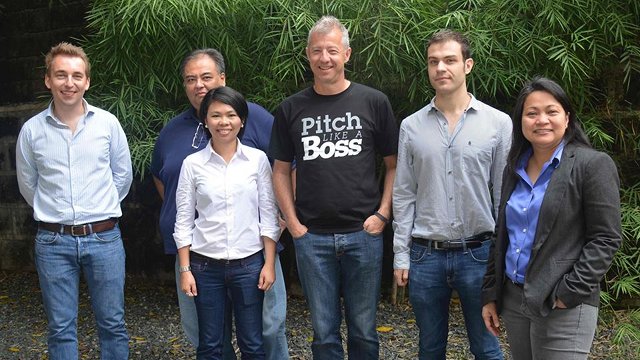SUMMARY
This is AI generated summarization, which may have errors. For context, always refer to the full article.
 Most industries in the country — from education and transportation to online retail and social discovery — are still in their infancy, according to the 2013 Philippines Startup Report by authors led by Ron Hose.
Most industries in the country — from education and transportation to online retail and social discovery — are still in their infancy, according to the 2013 Philippines Startup Report by authors led by Ron Hose.
In other words, they are ripe for business opportunity.
Though the Philippine entrepreneurial ecosystem is still young, there are tried-and-tested methods that we can use to launch innovative, successful companies. One of them is the concept of a lean startup.
I spoke to Phil Morle about how startups can run lean. The former CTO of Kazaa, he now mentors Philippine startups in his role as CEO of Pollenizer, which is a partner of Kickstart.
Throughout our talk, Morle spoke of the need for startups to get their minimum viable product (MVP) in front of customers as soon as they can. To combat the perfectionism that may get in the way of this, it’s good to use self-imposed constraints, such as trying to release the first version of a web app in one week.
Once in front of customers, dynamic tools, such as the lean canvas, can help entrepreneurs define the hypotheses that they will test. From there, entrepreneurs must run through the build > measure > learn cycle so they can incrementally arrive at the sharpest version of their business model.
Startup events can accelerate in accomplishing all of the above, Morle said, but it’s also important to not neglect the structure of the leadership itself. Co-founders should earn their equity over time, so as to encourage them to put in the long-term work needed to build a great company.
Here are snippets from our chat:
What is a lean startup?
PM: Lean startup is the art and science of learning what a business needs to become in the fastest, most efficient way. Lean is not the same as cheap or bootstrapped. It is the practical process for minimizing wasted effort and cost through bringing together the gut-instinct of the entrepreneur with a scientific method so that we can measure the impact of what we do as a team.
What are the biggest challenges that startups face in trying to run lean?
In lean, we need to get in front of real customers quickly so that we can start learning. Reid Hoffman says that if we are not embarrassed of the first version of our product, then we have released too late. Entrepreneurs struggle with actually doing this because they feel like they are releasing [garbage].
“Minimum viable product” in lean does not mean release something tatty and ill-considered. It means thinking about which features really matter and only releasing those. These should feel good to use, but may be lacking in automation, requiring the entrepreneur to do a lot of work at the back to make the magic happen.
For Trueproperty.ph, we made gorgeous pages for just 4 properties so that we could focus on how the business can sell a home by showing lifestyle details as well as a number of bedrooms and bathrooms. To test the core hypothesis that our business can succeed by amplifying lifestyle, we did not need user registration and login, search or browse. We just needed great pages for each property that we could funnel users directly to.
How do you encourage startups to get in front of their customers as soon as they can?
At Pollenizer, we build and release the first version of a web application in one week. The time-constraint determines what is released. It stops people from over thinking. It gets them into the habit of testing customer reaction to real products as soon as they can.
The process and tools make this rule implicit. Until customers start interacting with the business, there is nothing to measure and nothing can be learned. The further we travel without an encounter with users, the deeper we travel into risky territory.
Once, we were talking with a Sydney-based entrepreneur about his new release. He mentioned that he had been working on it for 6 months and wasn’t quite ready to release. Our solution: send a tweet to our followers announcing the new product’s launch the following week with an invite to come and hear the founder talk about it. Cruel? We are still friends with the founder.

What tools do you advise entrepreneurs use to run lean?
We use a lean canvas as our primary tool for business planning. We use this to define the current hypothesis for a sustainable business in all its dimensions. I always say that the canvas is not just a list of properties, it is also a list of relationships between those properties. When one thing changes, it often has an effect on other areas of the canvas.
The canvas shows the relationship between problem, customer, unique value proposition, solution, marketing channels, revenue, costs, critical metrics and unfair advantage. A startup is still learning what it needs to become and changes frequently. The lean canvas is a one page business plan that allows this to be done.
Our first lean canvas for Trueproperty.ph had “Australian and US buyers of PH property” for the customer cell. We tried to validate this by running a campaign on InterNations and looking at Google Trends for search volume from the different markets.
We learned that the domestic market was more substantial and responded better to our campaigns. Changing the customer cell to be “Renters in Metro Manilla” as an initial segment changed our hypothesis for channels to reach those customers and also started to shift the unique value proposition as these customers have different needs.
We are only a few weeks into Trueproperty.ph and, with so much to learn, it changes daily.
When we have captured the business on the lean canvas, we then use other tools for tracking “experiments.” Here we don’t take our assumptions for granted, but prove that they are correct by getting customers to do what we hope they will do.
As long as we don’t know, that is a risk that the business will fail.
Can you give a concrete example of how you are validating or disproving an assumption on a startup’s lean canvas?
The current solution hypothesis for TrueProperty.ph will require people that live in the areas where we have listings to provide information on their community in the same way that Tripadvisor does for travel destinations. If this is incorrect, then the business model is exposed to a new risk.
It is too risky to develop a whole platform for user-generated content if this is incorrect, and we don’t have to write any code to get an initial validation. The team for Trueproperty.ph are using a Facebook page called Life Happens in Makati to try different calls to action and value exchanges to get people to share.
Are there events that can accelerate the building of a lean startup?
Startup Weekend and other hackathons such as lean Startup Machine are a great place to practice the art of execution. With only two days to get results, there is no time to be precious and over think. We just need to get on with it.
The key thing after a hackathon is for the founding team to get on the train and commit or get off and let those that are willing to take the risk to get on with it. Too frequently these young startups die because of power disputes.
What advice do you usually give entrepreneurs for solving power disputes quickly and fairly?
Equity and contribution to the work are the two big points of dispute and they are related problems. We solve this as best we can in a few ways. First, by curating our teams.
This doesn’t leave it to chance that friends in the bar can also form a strong professional relationship as co-founders. Too often startups are held back with the tension that comes from friends that should not be there and don’t carry their weight.
Second, we make all sweat equity earned over time. If you leave early, you lose equity. This way there is no possibility of someone leaving after 3 months with 50% of the company. Given that equity needs to be earned, this self-governs disputes from people not pulling their weight, like a prenuptial agreement in marriages.
How should entrepreneurs balance learning these lean principles and ideas versus just jumping in and trying to learn things intuitively?
The best way to learn is to do. Get on with it. Release code. Measure what happens. Take a moment to learn. This is the learning cycle of lean. Build > Measure > Learn. Find content feeds that are helpful to you and don’t stop learning.
Can you give an example of a startup that has run lean all the way to success?
When we started Lawpath in Australia we were inspired by legalzoom.com in the US. This allows customers access to lawyers under an inexpensive subscription model. We were excited about how it disrupted legal professional services. We released an MVP for lawyers in the first week and had 20 lawyers signed up to provide services one week later. In week 2 we released a privacy policy template to attract small business customers and directed them to our lawyers to start asking questions under a $50-“3 questions per month” plan.
Learning 1: Quickly, we learned that customers wanted the option to ask a single question. We gave that option and question volume increased.
Learning 2: We learned that our customer was not the client asking questions, but the lawyer who valued our ability to send highly qualified new customers to them. We allowed questions to be asked for free and started charging the lawyers. This increased question volume again and increased revenue. This has led us to building a business that solves a massive problem for a defined user. We now spend every drop of resource on finding quality clients for lawyers and in doing so, also provide a better experience for clients asking questions.
It is not the business we set out to build, but we quickly learned where the value was and who the customer was. Businesses that win learn faster than those that don’t. – Rappler.com
Rappler business columnist Ezra Ferraz graduated from UC Berkeley and the University of Southern California, where he taught writing for 3 years. He now consults full-time for educational companies in the United States. He brings you Philippine business leaders, their insights, and their secrets via Executive Edge. Follow him on Twitter: @EzraFerraz
READ:
[Executive Edge] Fund raising through crowdfunding
[Executive Edge] Building your social media presence
[Executive Edge] Making your pitches come alive
[Executive Edge] Revolutionizing the BPO industry
[Executive Edge] The business of elite security
[Executive Edge] Filipino innovator’s dilemma
What do bitcoin and remittances have in common?
Add a comment
How does this make you feel?
There are no comments yet. Add your comment to start the conversation.